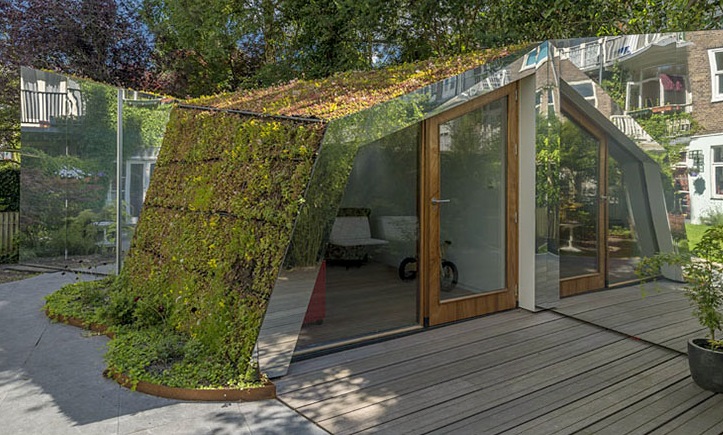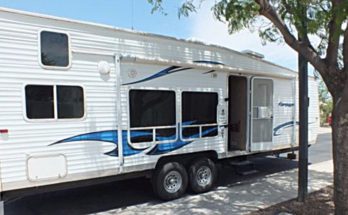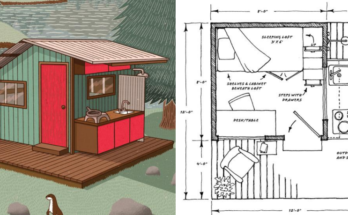This garden studio or tiny house — guest house, anyone — uses reflective glass, something unusual in the tiny house architecture we’ve come across so far, to “camouflage” it into its surroundings.
“Building an extension is not always the solution if you want more living space,” the designers stated of the structure. It was done by cc-studio. The designers on this one include: Gerald Lindner, Danny van Kessel, and Peter Heideman. “At least that was the out of the box answer cc-studio came up with after having been asked to add more space to the ground floor apartment of the family Maarten and Lori Lens-FitzGerald in Watergraafsmeer – a lovely living district of Amsterdam. Extending would have added square metres but would have meant destroying a relatively new kitchen, not adding any new rooms due to the building layout and planning restrictions. But more importantly it would have narrowed the 12m deep garden.
area (brutto/netto): 26m² – 20m²
dimensions (max): 6,9m x 5,2m
volume: 60m3
height (max): 3m
plot: 126m²
“Already, having a garden in Amsterdam is a rare commodity; having a 10m wide garden is even more special as most real estates are usually only 5 to 6m wide. Strangely this luxury is also problematic as the depth to width ratio (now 12m x 10,5m) already makes the garden feel more wide than deep due to perspective distortion. Reducing the depth by another 3m would have simply turned the garden into a back yard, leaving little space over for green. Even more so as the two corners of the garden were already occupied by rundown garden sheds.
“[T]o strengthen the visual dynamic of the garden the main diagonal seen from within the living space inside (bottom left) and that runs to the sun lit (top right) back corner is kept un-built. By placing mirrored planes the visual depth of the garden was enhanced to look deeper. Also the geometry of the volume was specially tailored to play with the perspective lines and to have no vertical surfaces parallel to the house but at an angle to have a more continuous flow. This geometry was tested and adjusted on site using a line mock-up first before finalizing the design.
In the corner in which the volume is placed, there is much less sunlight due to the overhanging neighbouring trees. To get more light to that part of the garden, again a mirrored plane was used, this time to reflect the light of the better illuminated section of the garden back. The final measure taken was to make sure that the rebuilt volume would be part of the garden instead of part of the built environment. This was done by covering it with green (sedum) on faceted angular surfaces to avoid the typical box shape associated to buildings and by hiding the windows from direct sight. This window orientation also gives the studio a sense of intimacy and privacy. So much so that it is not only used as an office space but incidentally doubles as a curtain-less guest room.”
The photos are by John Lewis Marshall. For more of cc-studio’s work, find them in our directory of prefab home designers and builders.



